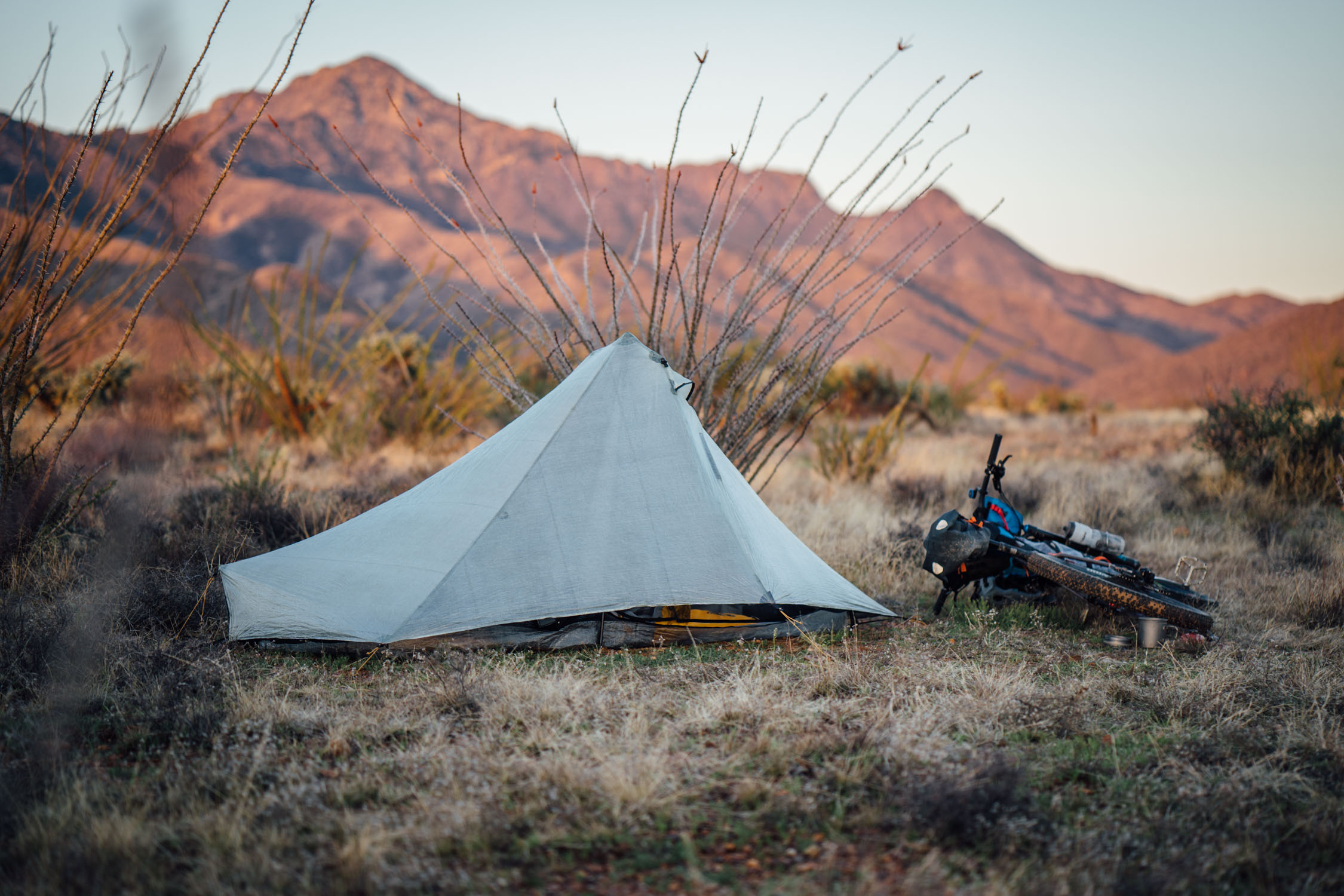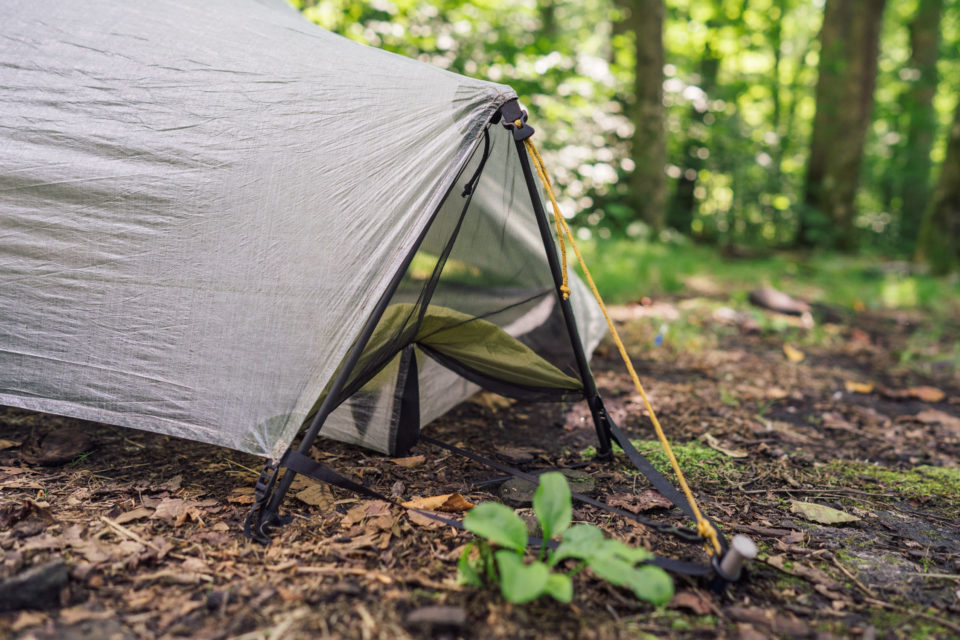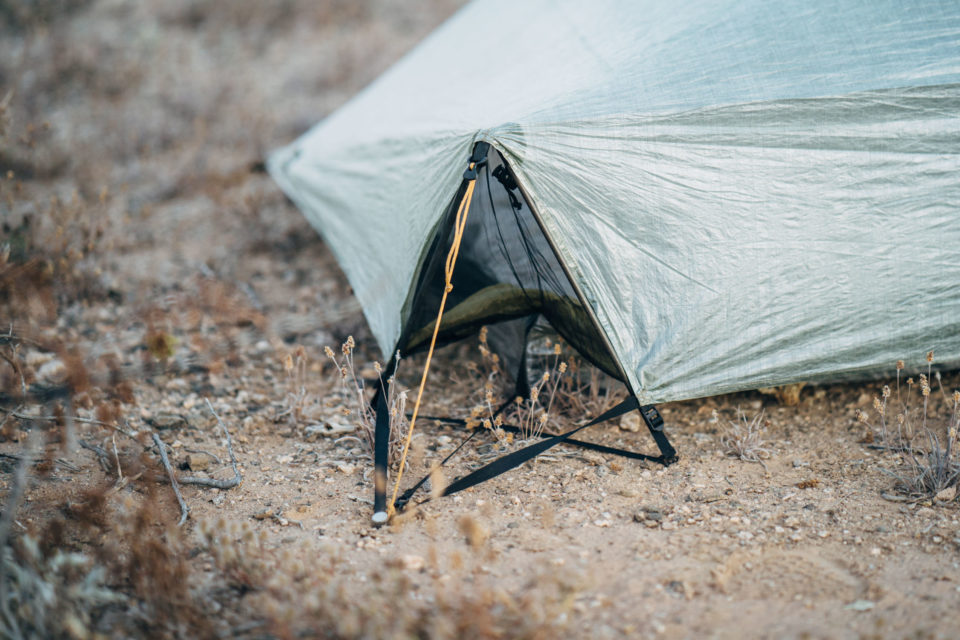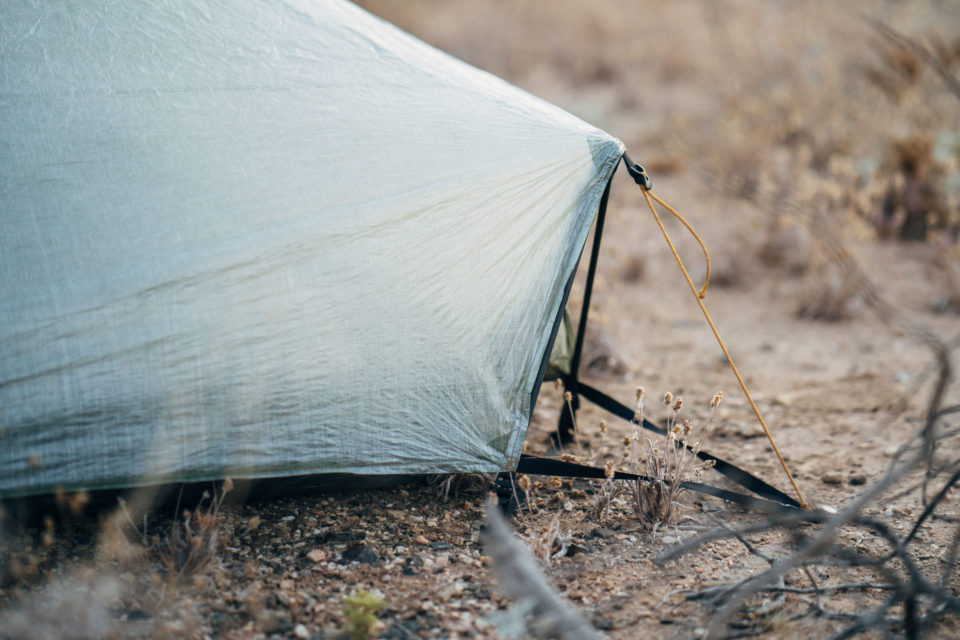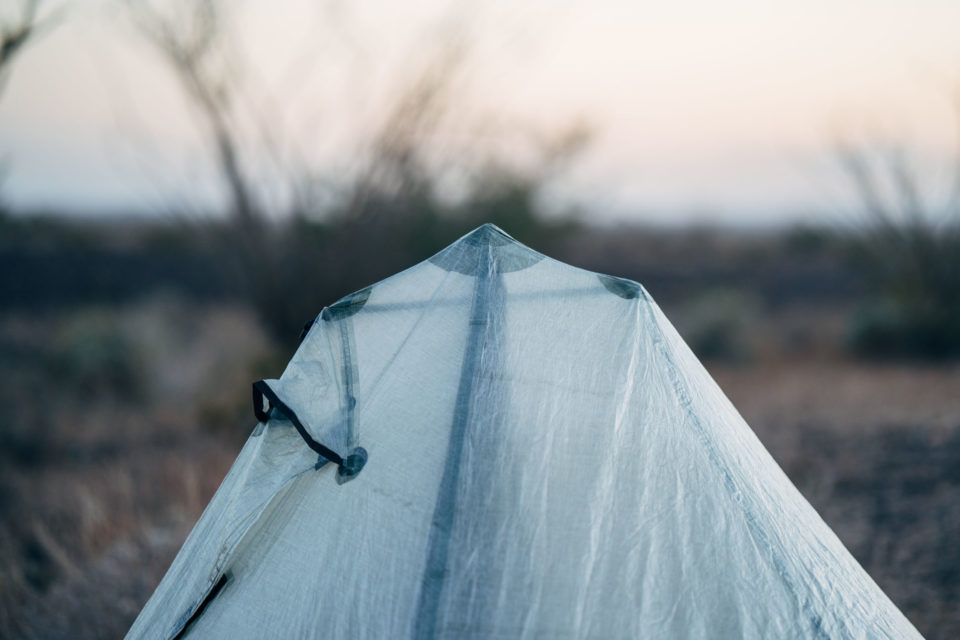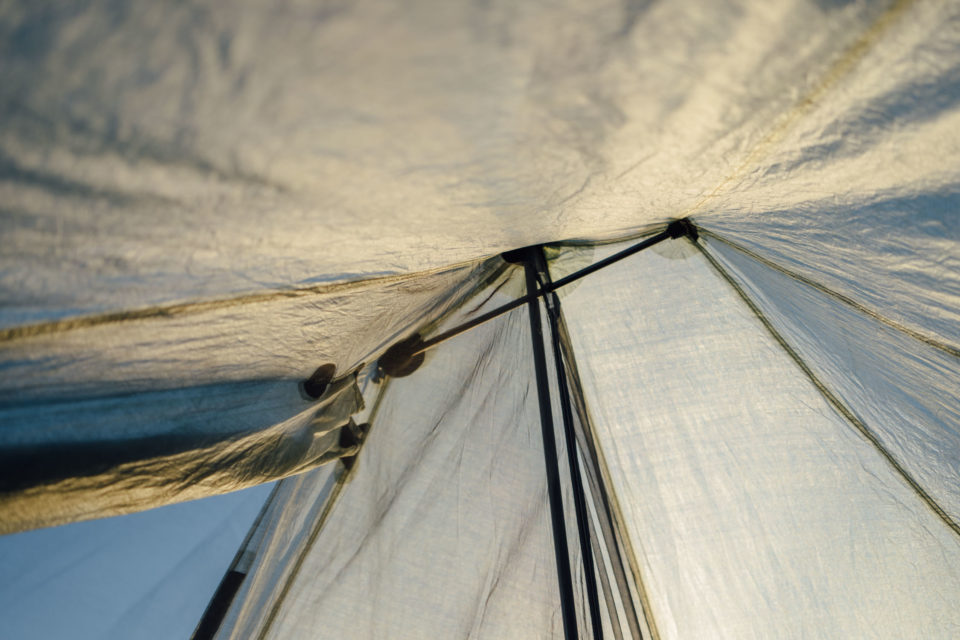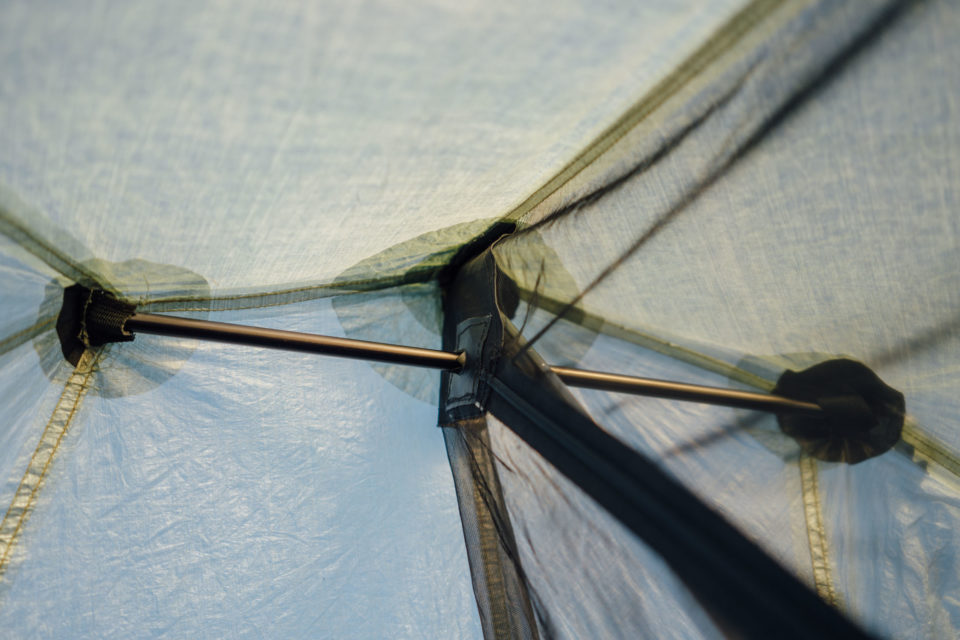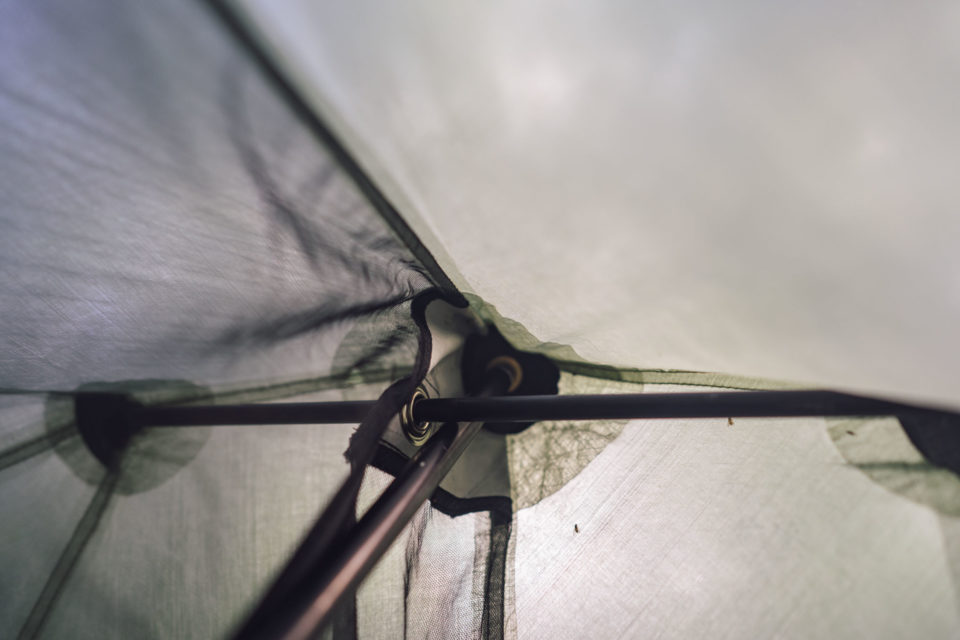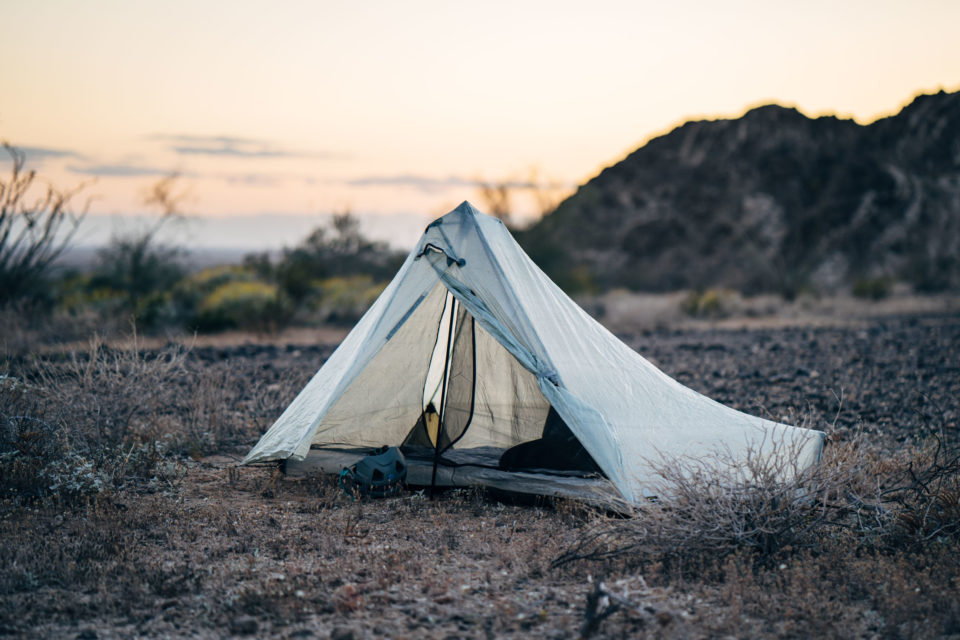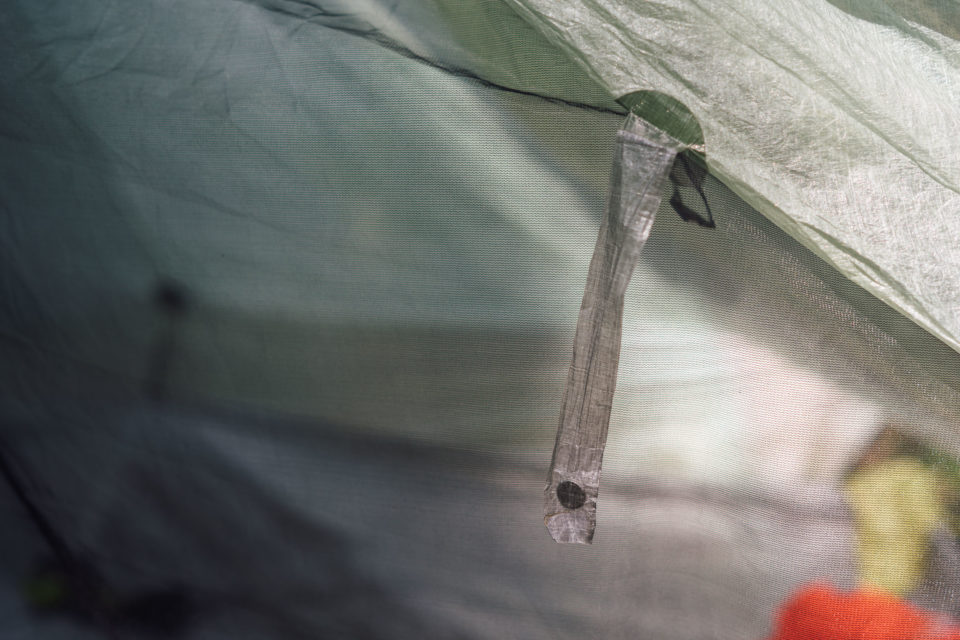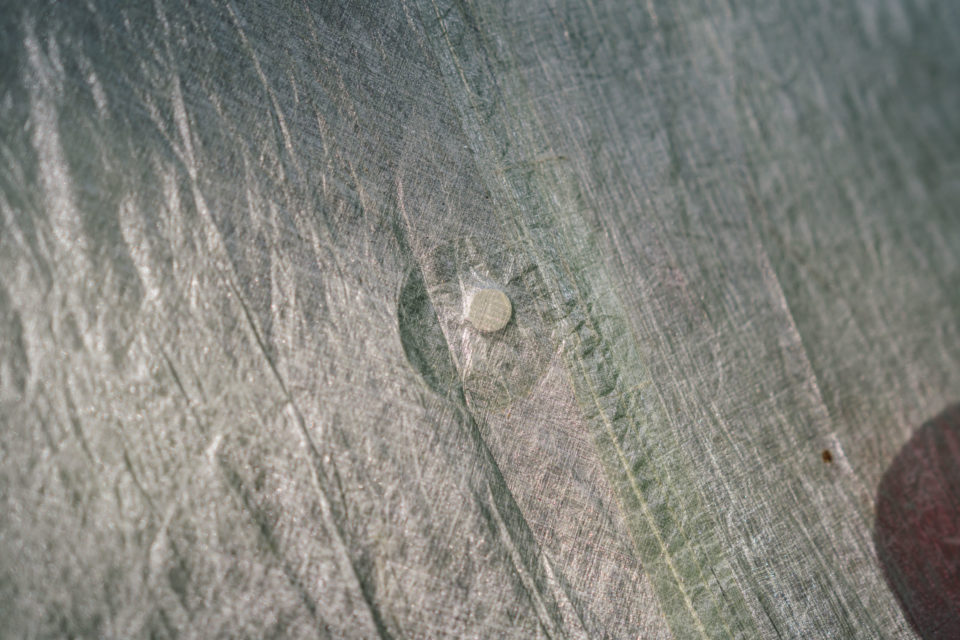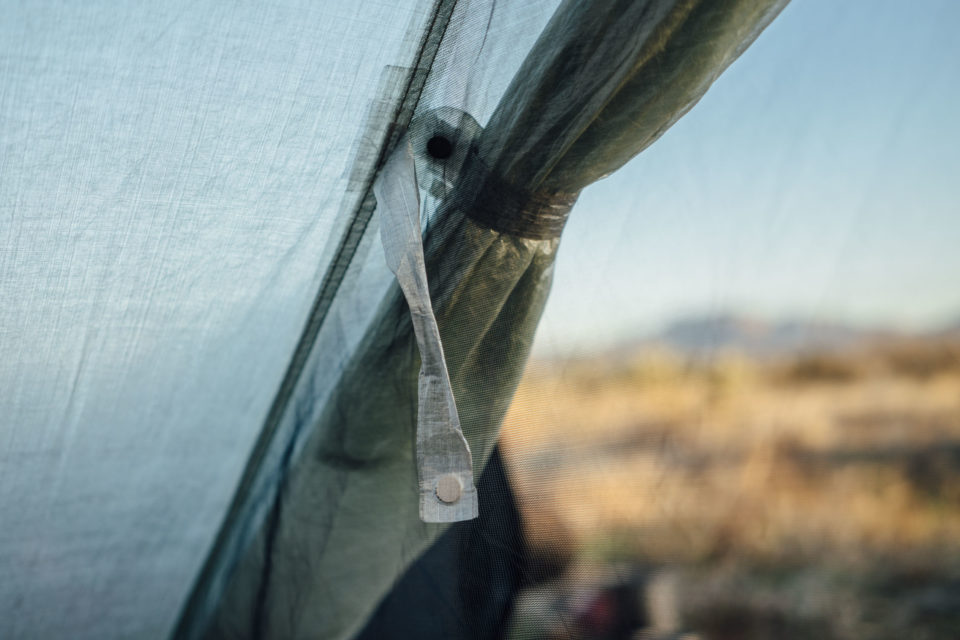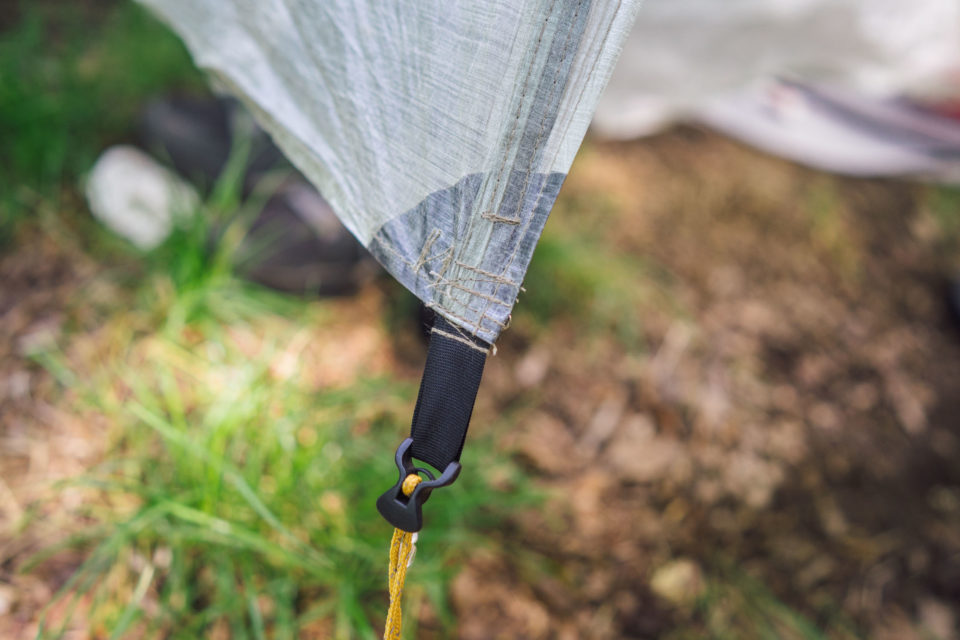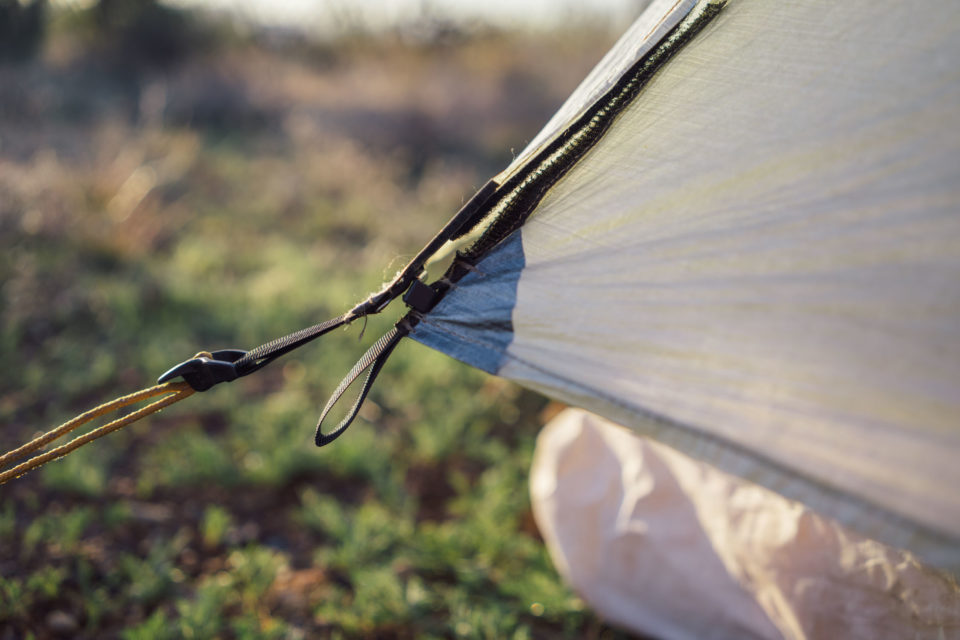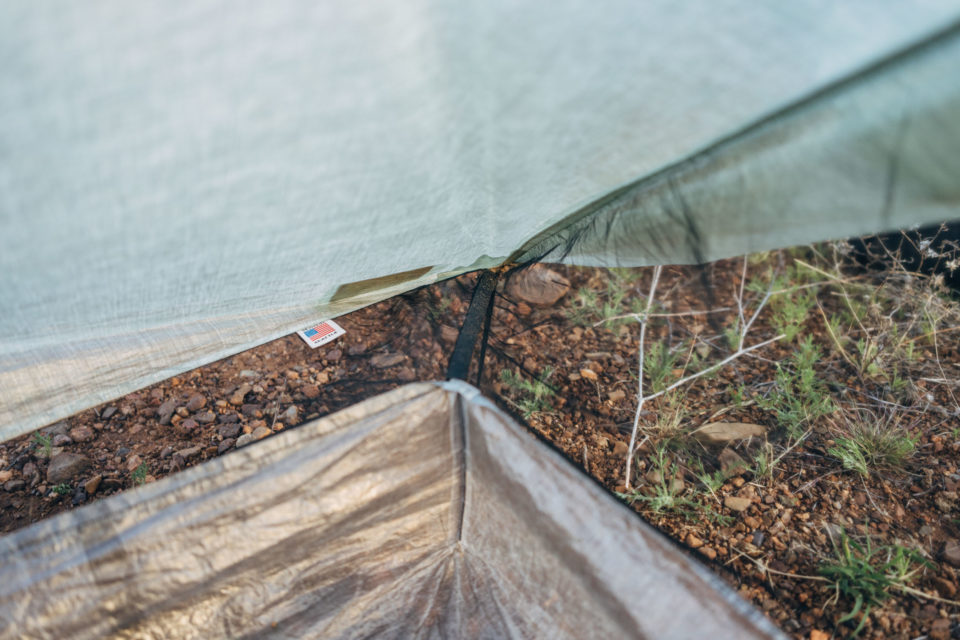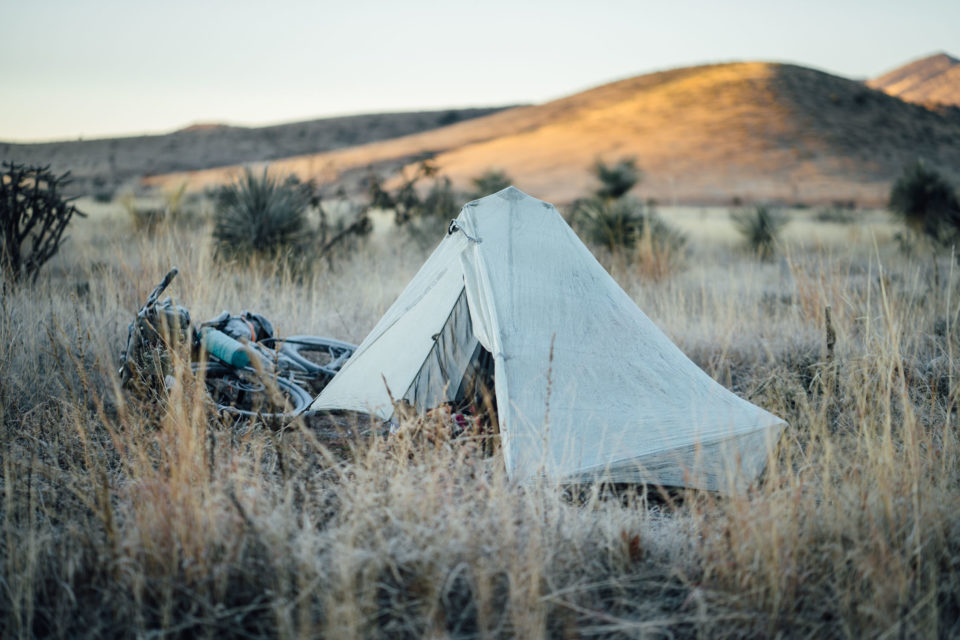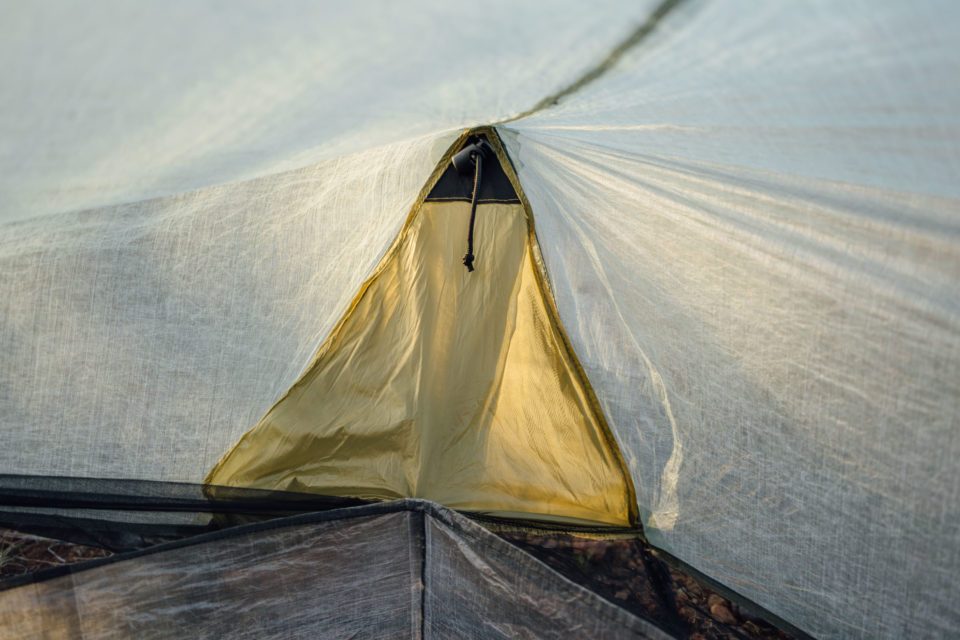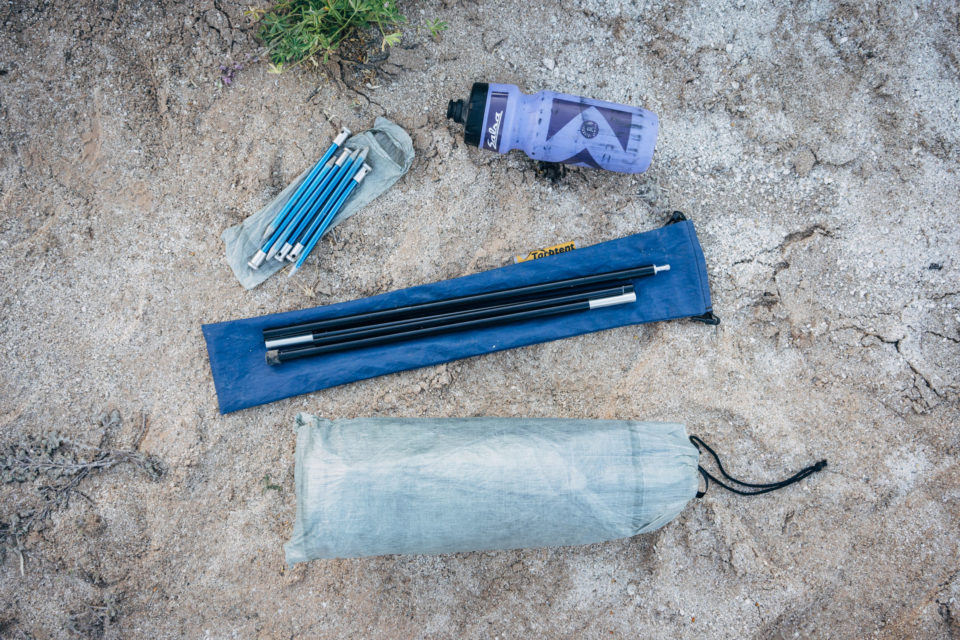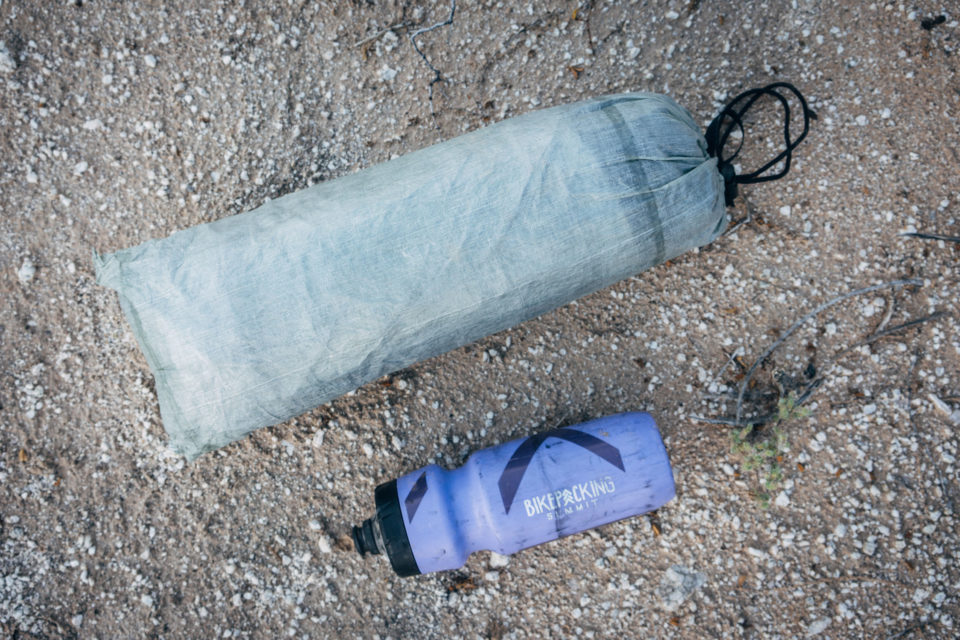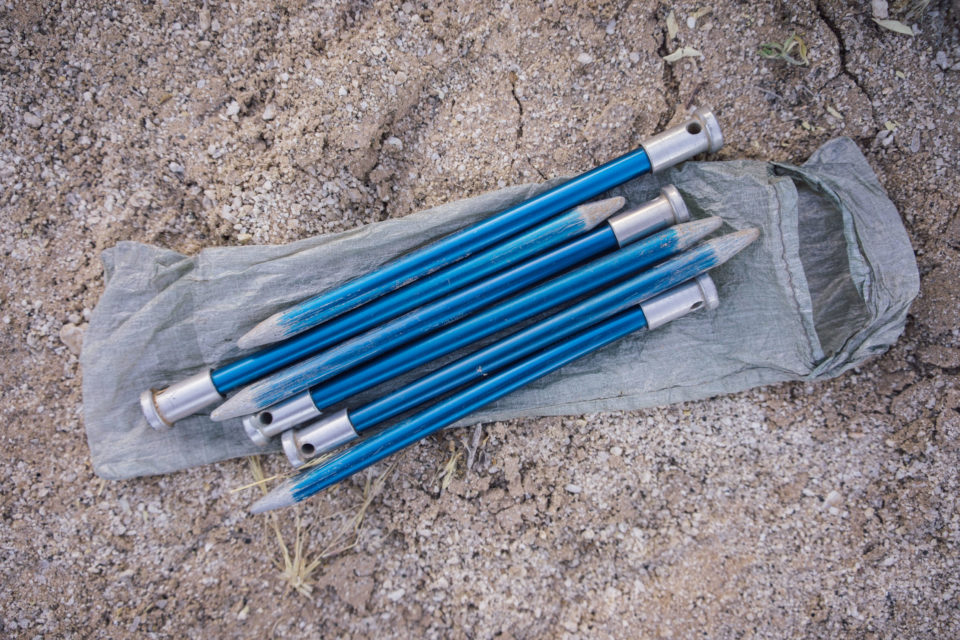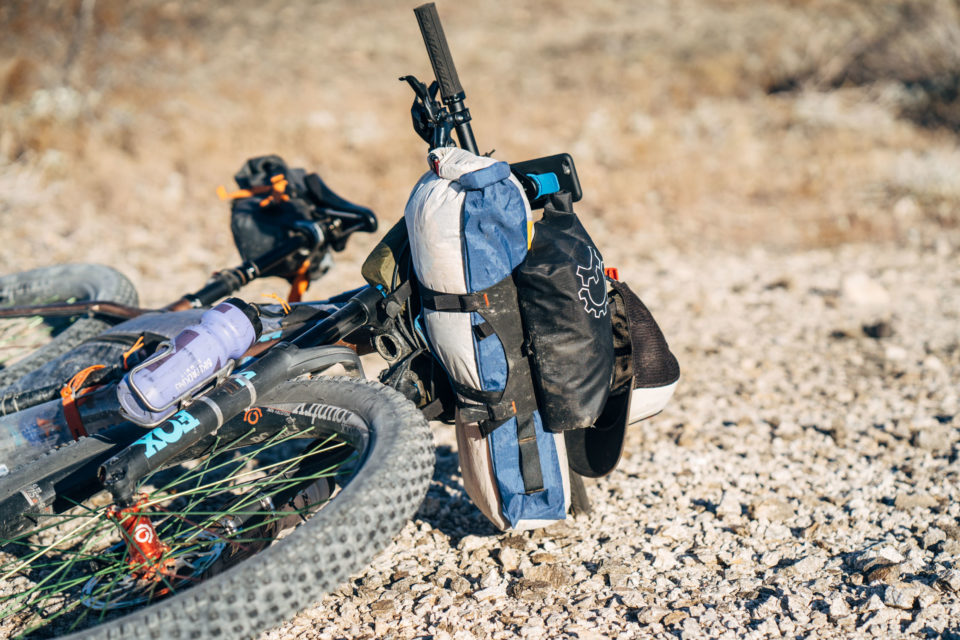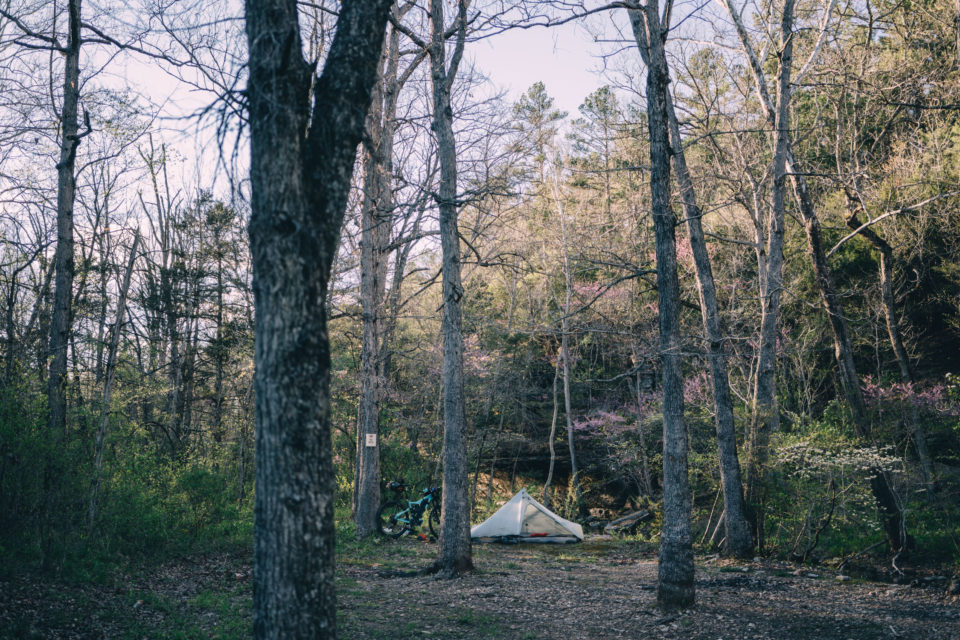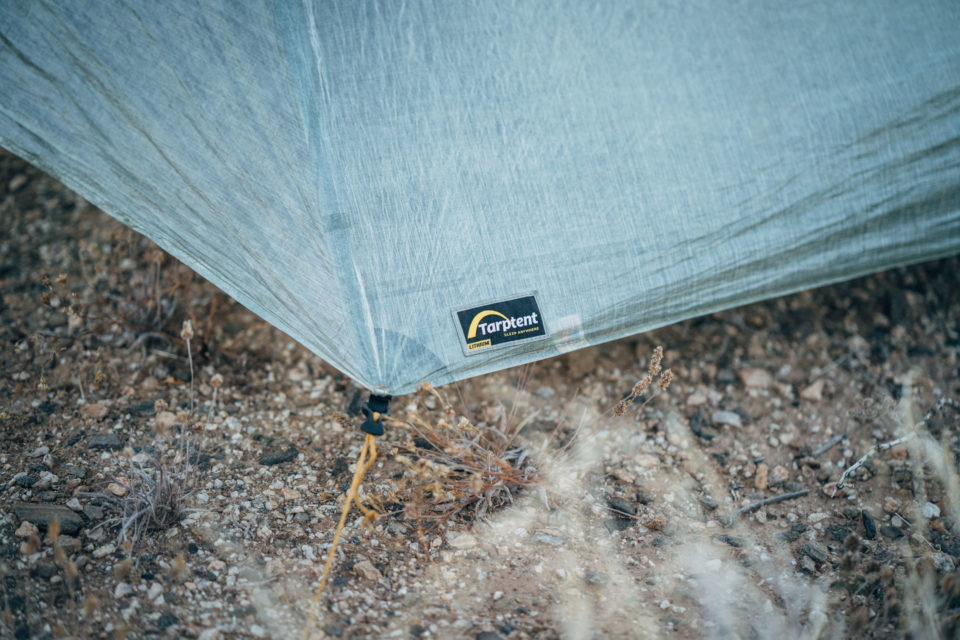Tarptent Aeon Li Review: One Pound, One Person
Share This
The Tarptent Aeon Li (“lithium”) is a single-pound, single-pole, single-person, single-wall, half-pyramid shelter that’s extraordinarily ultralight yet still quite spacious. We’ve been testing one for nearly a year to see how it holds up after a lot of rigorous use. Here’s the full review.
For those unfamiliar, Tarptent is a growing outdoor brand based in Nevada City, CA. The company manufactures all of its products in Seattle, WA, and recently updated several of its tents, including the popular Double Rainbow that we wrote about in June. They also designed a new line of tents for bikepackers and backpackers seeking exceptionally ultralight shelters that are still fully encapsulated to keep out water and bugs. Named after the element Li, a soft and silvery metal, this line of silvery Dyneema tents is called the Lithium Project. It started by creating ultralight Dyneema variations for two of Tarptent’s more popular designs, resulting in the Notch Li and Stratosphere Li. Later, the new Aeon Li was released on its own and became one of the smallest and lightest one-person tents on the market. We’ve put several dozen nights on the Aeon Li since we got it last fall, on trips in the southwestern US, Montana, and the Appalachian Mountains.

Tarptent is known for its rather complex and eccentric design approach, or “tent’gineering” as they’ve dubbed it. Inspired by interesting mathematical and geometrical concepts, such as prismatic shapes and catenary curves, Tarptent’s shelters often have relatively unconventional contours. The Tarptent Aeon Li is a nice example of several of Tarptent’s geometric mainstays. It utilizes a modified half-pyramid design and the crux of many of Tarptent’s designs—Pitchloc structures. These patented structural components each consist of two carbon fiber tubes and three cords to create a pyramidal shape. Pitchlocs are used to elevate where an angle terminates, in turn providing a short wall perpendicular to the floor and enhancing the usable interior volume. According to Tarptent, they also increase the structural strength and stability of the tent. Best of all, they each only require a single stake.
The two back corners of the Aeon Li have Pitchloc structures. Each features two 14” (36cm) carbon poles that are held in place using small pockets that are stitched into the compression straps. When staked, the inner wall of the Pitchloc pyramid sits almost perpendicular to the ground. This seemed a little odd – even overly complex at first – but once I set it up it made perfect sense. Each of these structures raises the sidewall to create more interior area, which keeps me and the sleeping bag away from the tent body. This is something that’s pretty important with a single-wall Dyneema tent (see boxout below). Tarptent also claims that Pitchlocs increase storm strength, and allow users up to 7′ tall to sit and sleep comfortably. I think 7′ might be a generous estimate, but being about 6’ even, I have plenty of room, even enough to stash personal items and gear on the floor above my head. There’s one additional carbon strut at the center of the back wall that balances out the two corners.
At the front of the tent, the main structure comes from a single pole. This can be a hiking pole, but I used the 42” (107cm) Vertical Support Pole that Tarptent sells separately for $16. It weighs 4.2oz (119g) and breaks into three segments, allowing it to pack down to about 18” (46cm). On one end, the pole has a plastic blunt-end cap that simply rests on the ground outside the door. The other end has a small metal nipple that fits into a metal grommet at the Aeon Li’s peak. A short, 13.5” (34cm) aluminum cross-brace fits in two pockets at the apex, forming a shallow peak and providing a little more headroom. The cross-brace penetrates the interior and exterior of the tent through a small grommet with a perforated membrane to seal out bugs.
Aeon Li Setup
There are a couple options for setting up the Aeon Li. The typical configuration involves staking the front “peak” of the tent to form a five-sided structure. This secures the left-side front wall and creates a vestibule. The right-hand door can then either be rolled up or clipped at the bottom of the peak for a completely sealed vestibule. The second option is to leave the entire front open with both doors rolled back. The structural awning formed by the crossed pole and brace creates a nice equilibrium with the staked front corners of the tent and eliminates the need for the forward guyline. I tried it this way a time or two, but prefer having the dew protective vestibule in place. Which, I might add, is surprisingly roomy.
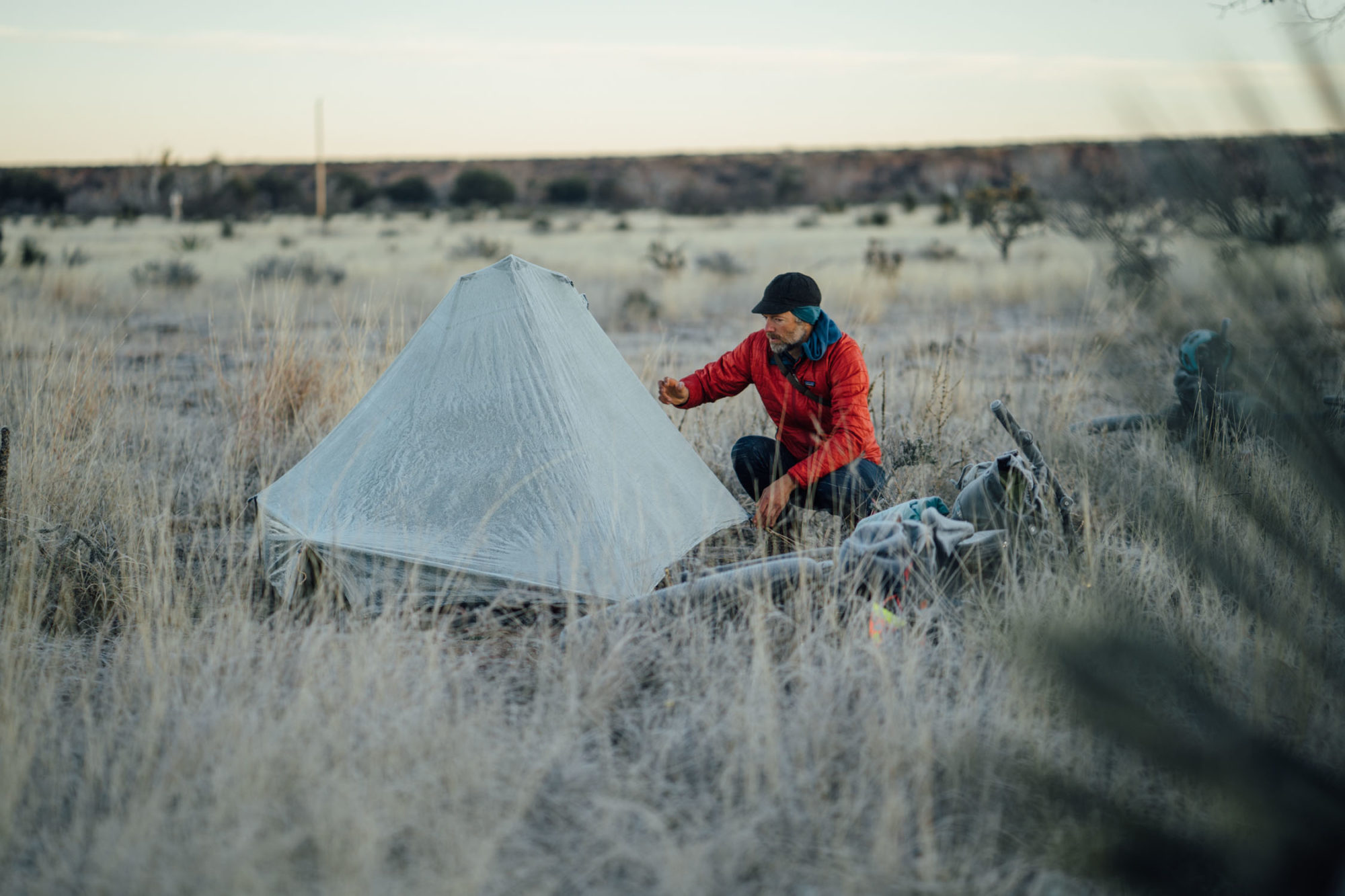
This brings to mind one of my favorite features on the Aeon Li: it has magnetic door-keepers. On each side, there is a magnet sealed within the tent wall and a small Dyneema strap with another embedded magnet. These connect around the rolled-up door flap and work like a charm—much easier than toggles or the hook and loop fixtures commonly found on other tents. Make sure to check out the video below for a better look at the Aeon Li’s shape and size.
All told, the Tarptent Aeon Li pitches surprisingly quick. I say surprisingly, because after seeing and installing the Pitchloc struts the first time, I envisioned a cumbersome process that I’d have to painstakingly suffer through each evening after a long ride. However, that wasn’t at all the case. In a nutshell, I found best way was to simply stake the four corners, then install the support polls and cross-brace. From there, the simple sliding locks on the yellow cords can easily be tweaked at the corners to get the tension right for a good, taught pitch every time. That’s not always the case with double wall tents. Of course, it’s a “tarp” tent, so it’s far from freestanding, so pitching on concrete or rock would be next to impossible.
The Single-wall/Dyneema Dilemma
There’s no questioning the weight benefit of a single-wall Dyneema tarp or tent. Most ultralight, non-Dyneema, double-wall tents similar in size usually weigh nearly a pound more, give or take a few ounces. For example, the Big Agnes Fly Creek UL1 Bikepack I reviewed recently weighs 1.05 kg (2.3 pounds). The entire Aeon Li weighs about 668 grams (see below for details, and note this is with the PolePouch and heavy(ish) support pole). Also note that the more comparable “Crazylight” Fly Creek UL1 Platinum—one of the lightest, sil-nylon-based 1-person tents on the market—has a claimed weight of 1lb 13oz (822 grams).
For many, this is savings is worth it. However, it’s not all roses with a single wall tent. The biggest issue most people complain about is the moisture and condensation. While it can happen in any tent—some are better than others—a single wall tent puts the moisture right next to you. So, if your sleeping bag touches the tent wall, it will get wet. Fortunately, the Aeon Li has generous floorspace and plenty of interior room, so I didn’t have that problem often.
Dyneema also seems to be slower to dry than sil-nylon. I have a personal peeve about packing up a wet tent, which I’ve had to throw to the wind and not worry about on many occasions with the Aeon Li. There is one solution that I’ve heard folks using with Dyneema tents, however. Bring a dish sponge. This allows you to sponge out the interior after a particularly dewy evening, soaking up the moisture one pass at a time. Then you simply wring the sponge out in the vestibule several times and that speeds up the drying process.
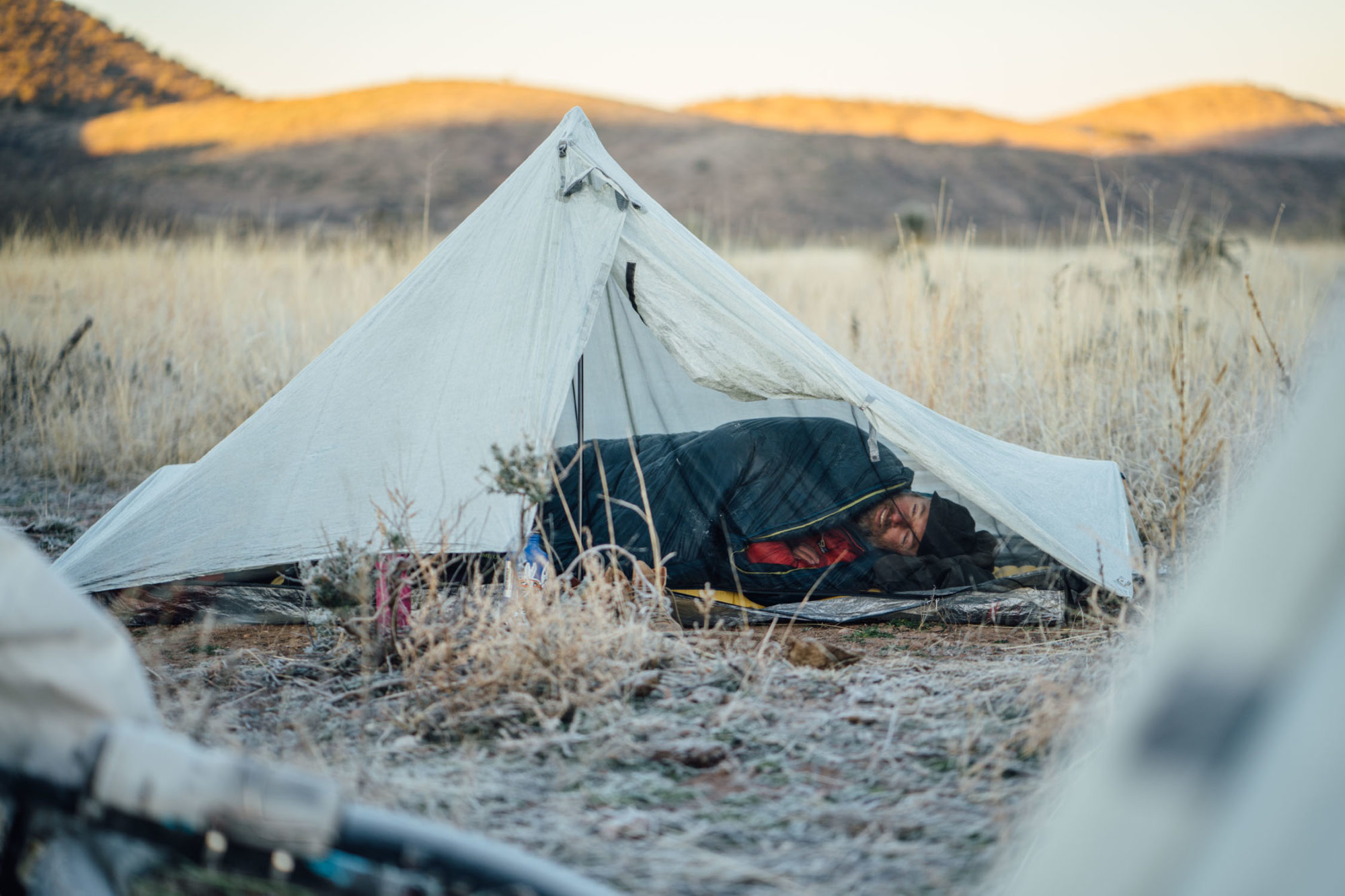
Ventilation
The Tarptent Aeon Li does an okay job at ventilation. It’s not great, but it’s not too bad, either. The best way to guarantee good airflow is to leave the door open, exposing the mesh wall to the outside world, which I’ve done on many occasions. The Aeon Li also has a few built in provisions to aid in ventilation. Most notably, it has a flap/vent at the front of the top peak. This is simply a hole that opens up to the vestibule area and can be forced open or squished down. There’s not really much to it. The body of the tent also has a mesh netting between the bathtub floor and back and side walls. This doesn’t do too much, but allows some airflow, and by design, the wall overlaps this mesh transition providing a place for condensation to drip off into the netting and outside, instead of on the floor. Additionally, both Pitchloc back corners have an optional sil-nylon fly that can be battened up to prevent cold air from coming through, or opened up to aid in ventilation.
Tarptent Aeon Li Packed Up
The Tarptent Aeon Li includes a set of six aluminum stakes in their own Dyneema sack, five carbon Pitchloc struts, and a single aluminum cross-brace for the roof. All of this packs neatly into an included Dyneema stuff sack.
As some of you may already know, even though Dyneema is comparably lighter, it’s a little more bulky than ultralight ripstop nylon. Made with 0.51 oz Dyneema Composite Fabric, the Aeon Li seems to be a slight exception and packs up very small—about 15” x 5.5” (38 x 14cm)—similar in pack size to a Fly Creek UL1 or other small ultralight tents. And you save a little space with fewer poles, considering there’s only one (plus the cross-brace). Another limiter to its packed size is the set of five 14” Pitchloc carbon struts. It would be quite an undertaking to remove them and reinsert them during each teardown and pitch, so it’s best to leave them in place and roll the tent up around them. This means the Aeon Li is limited to a packed length of about 15” (38cm). This shouldn’t be a big deal unless you’re interested in putting it in a narrow or short bag. It was a little tight getting into my BXB Teardrop, for example. I could also see it being a challenge to fit in small panniers.
My general preference for on-the-bike packing is to put my full sleep system on the handlebars. Recently, that’s either been in the Revelate Pronghorn or the Porcelain Rocket Horton system. With both of these, I put the tent in the removable drybag first, then stuff my quilt (lately, the Enlightened Equipment Enigma) in around it, then the sleeping pad. This creates a cohesive, solid unit that’s nice and stable on the bars. The pole and included aluminum cross-brace are packed into Tarptent’s own $25 PolePouch, which straps to the front of the handlebar roll.
The Tarptent Aeon Li, stakes, and two stuff sacks weigh just over a pound, 507 grams (17.9oz) on my scale. The added support pole, aluminum cross-brace, and PolePouch weigh 161 grams (5.7oz). All told, with stakes, poles, sacks, and tent, the system weighs 668 grams (23.6oz or 1.47 pounds). My entire sleep system in the Revelate Pronghorn stuff bag weighs 1730 grams (3.81 pounds). This is where the Aeon Li shines. Shaving nearly a pound off the handlebar weight was immediately noticeable and made a huge difference in more technical singletrack riding.
- Weight (tent/stakes) 507 grams (17.9oz or 1.1 pound)
- Weight (poles/PolePouch) 161 grams (5.7oz)
- Packed size 15 x 5.5″ (38 x 14cm)
- Floor space 88 x 30″ (224 x 76cm)
- Place of Manufacture Seattle, WA
- Price $535
- Manufacturer’s Details Tarptent.com
Pros
- Unbelievably lightweight
- Pitchloc/half-pyramid design is perfectly spacious and comfortable
- Relatively easy to set up, once you get used to it
- Dyneema construction seems durable so far
- Magnetic door-keepers are ingenious
- Made in the USA
Cons
- Somewhat expensive (and currently out of stock)
- Easy to lose carbon struts
- Not freestanding
Wrap Up
This was my first experience with Tarptent. On initial inspection, I thought it seemed a bit too convoluted with its myriad of carbon struts, complex Pitchloc straps, and assortment of pole pockets. There’s quite a bit going on. But after pitching it once, its elegance was revealed and I was hooked. The components that I furrowed my brow about at first—the Pitchlocs and mesh transition—became the features I really liked. As Cass described the brand’s offerings, “in typical Tarptent form, there are some unique eccentricities, but they always work together very well.”
As mentioned, single wall tents have some inherent challenges. When conditions are muggy, or the dew point is just right, you’ll need to take care not to brush up against the tent’s sidewalls. But, the Aeon Li certainly addresses this with a lavish 88″ bathtub floor length and nicely elevated back wall via the two Pitchlocs. And, the mesh transition from floor to wall provides a good escape point for dripping water.
Overall, I’m really impressed by the Tarptent Aeon Li. It’s relatively simple to pitch, has nice and lengthy floor area, plenty of interior space, a sizable vestibule, and vents decently well. I admittedly worry about its long-term durability. After all, it’s constructed out of rather thin 0.51 oz Dyneema. However, Tarptent seems to have paid close attention to the points where seams meet and areas that are prone to abrasion and stress. There are plenty of welded layers at these junctions to stave off wear and tear. And, in general, Dyneema is pretty tough stuff. After pitching and packing it multiple dozens of times, it’s a little sullied in places, but not really showing any signs of wear to speak of.
Please keep the conversation civil, constructive, and inclusive, or your comment will be removed.






